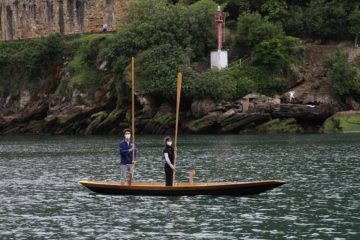Last week I left you with a sight of the forward deck, more on it on this post.
As you might have noticed, I avoided the modern, tapering-planks method in favor of a more traditional and efficient way of planking. I believe these two photos here below can explain more than a thousand words what I did:

Cut 
Reassemble
Here is the finished deck, with the planks cut flush with the breasthook. At the tip of the bow you can see the top of the stem, with two small triangles filling the gap on its sides. These are normally separated from the breasthook but Ioanna liked the idea of making them all out of a single piece.
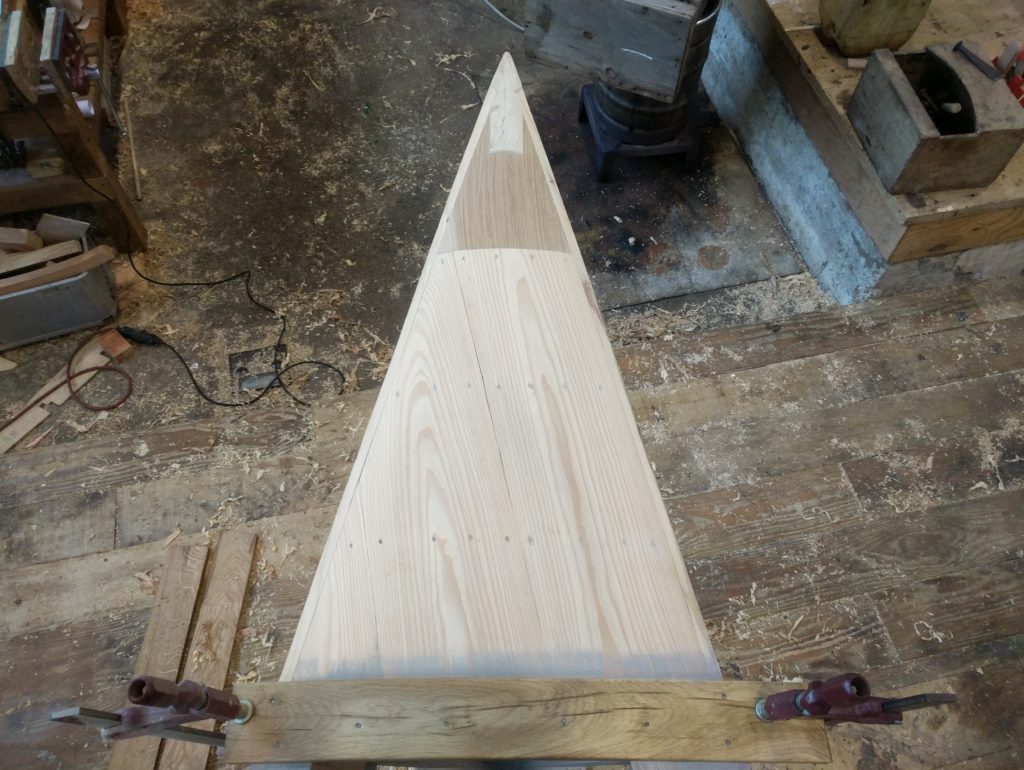
At the bottom of the picture you can see a cross piece made of oak, steam bent into place. In Venice it would be bent with open fire but we went for a method I’m more familiar with.
We then installed the two upper strakes called falche (waterboards in English maybe?). The overlap the sheer plank and are fastened mainly to stanchions and frames (but also into the thwart and the deck cross pieces).

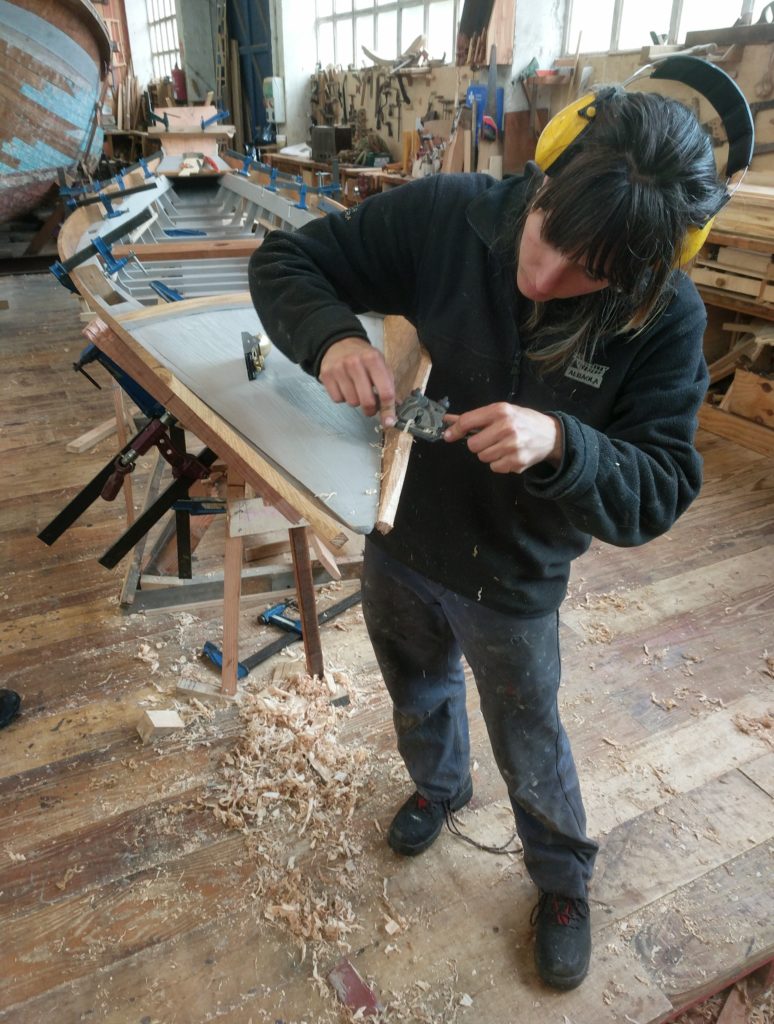
Ioanna shapes the water boards 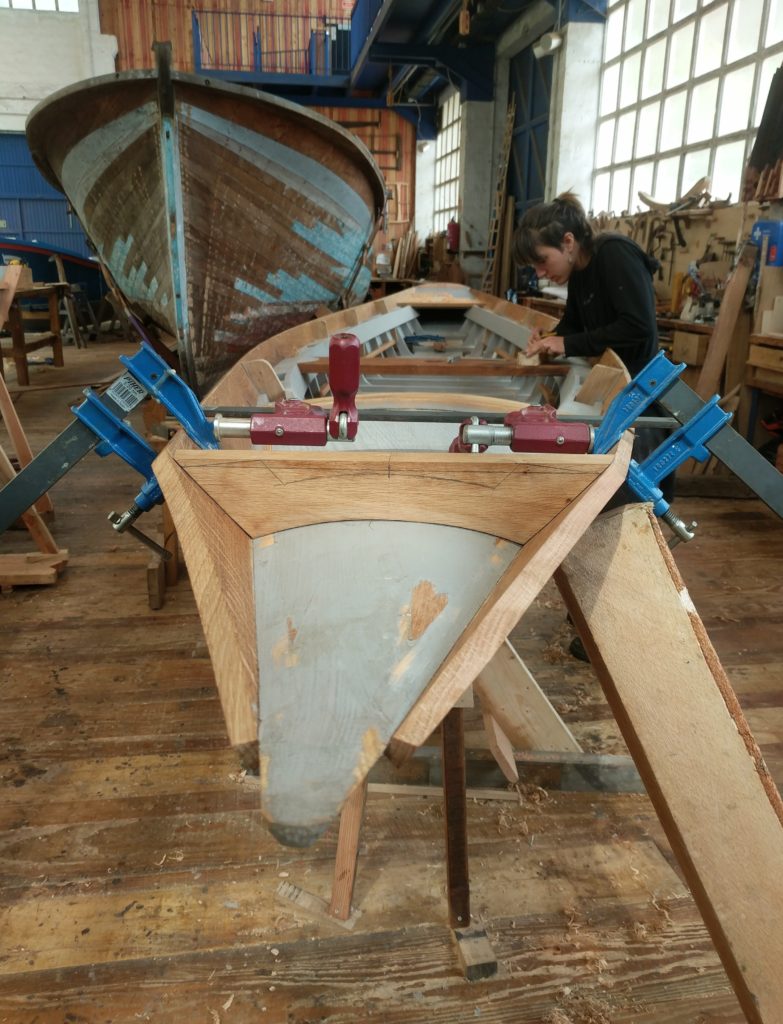
Making of the emme 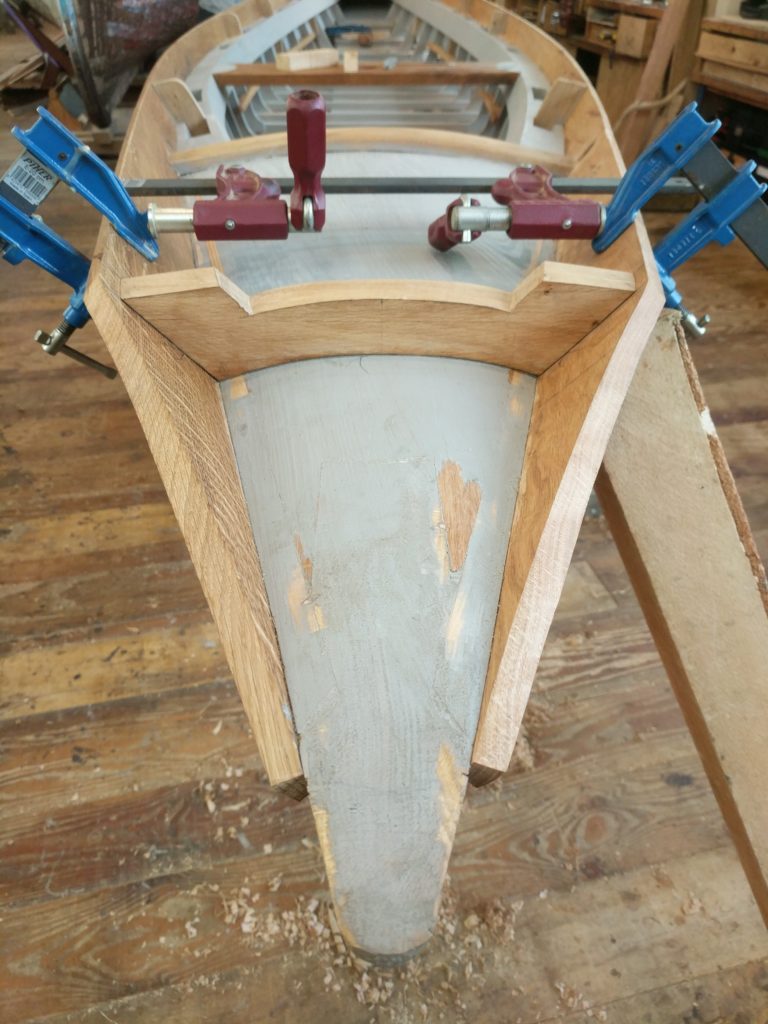
The emme in place 
On the thwart you can notice a prototype of knee, I forgot to photograph the final ones
At the aft, the transom got its final cut, and looks very elegant now.
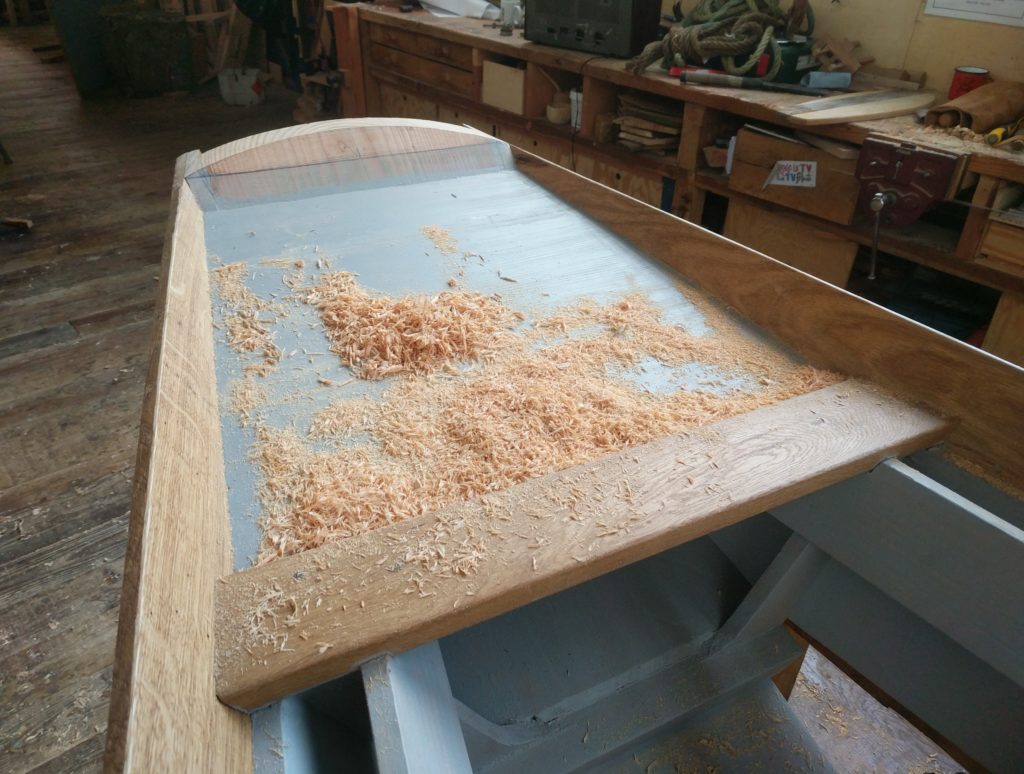
After fastening everything, it was time to flip the boat. We therefore dismantled the strongback, since we have no plans to build another sandolo here in the near future.

We also faired the stem and the filling piece at the bow, ready to install the side planks. These are almost ready, just need a few dutchmen and plugs on a few nasty knots here and there.
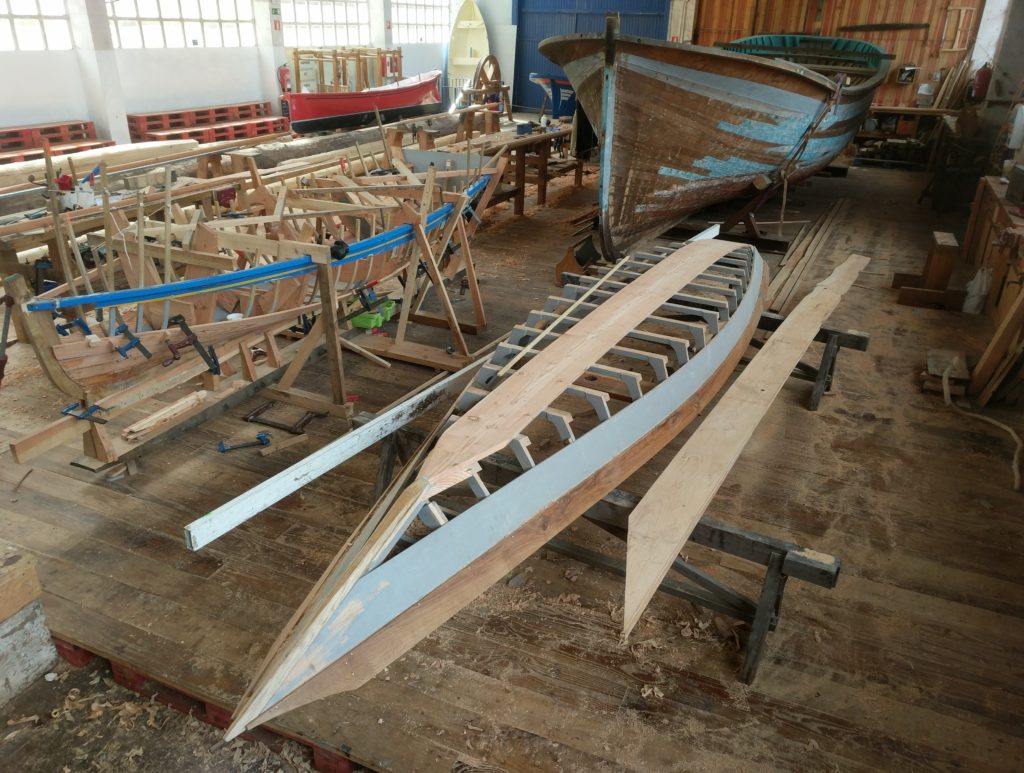
But the side planks are the last to be installed. First we need to close the bottom.
Since we were afraid the dry bottom planks would swell up once in the water, pushing the side planks out of place, we decided to soak them in the sea for a couple of days.
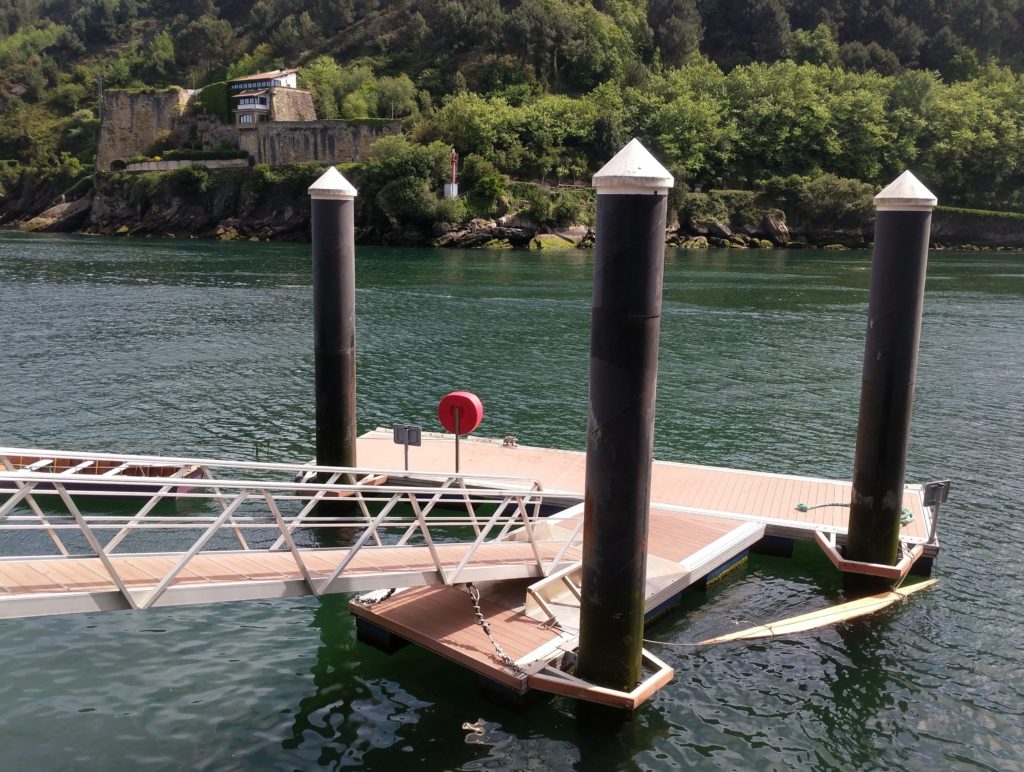
I am not sure how they prevent this from happening in Venice, but I’ll try to find out. That’s it for this week, see you the next one, hopefully with the boat ready to be painted!
